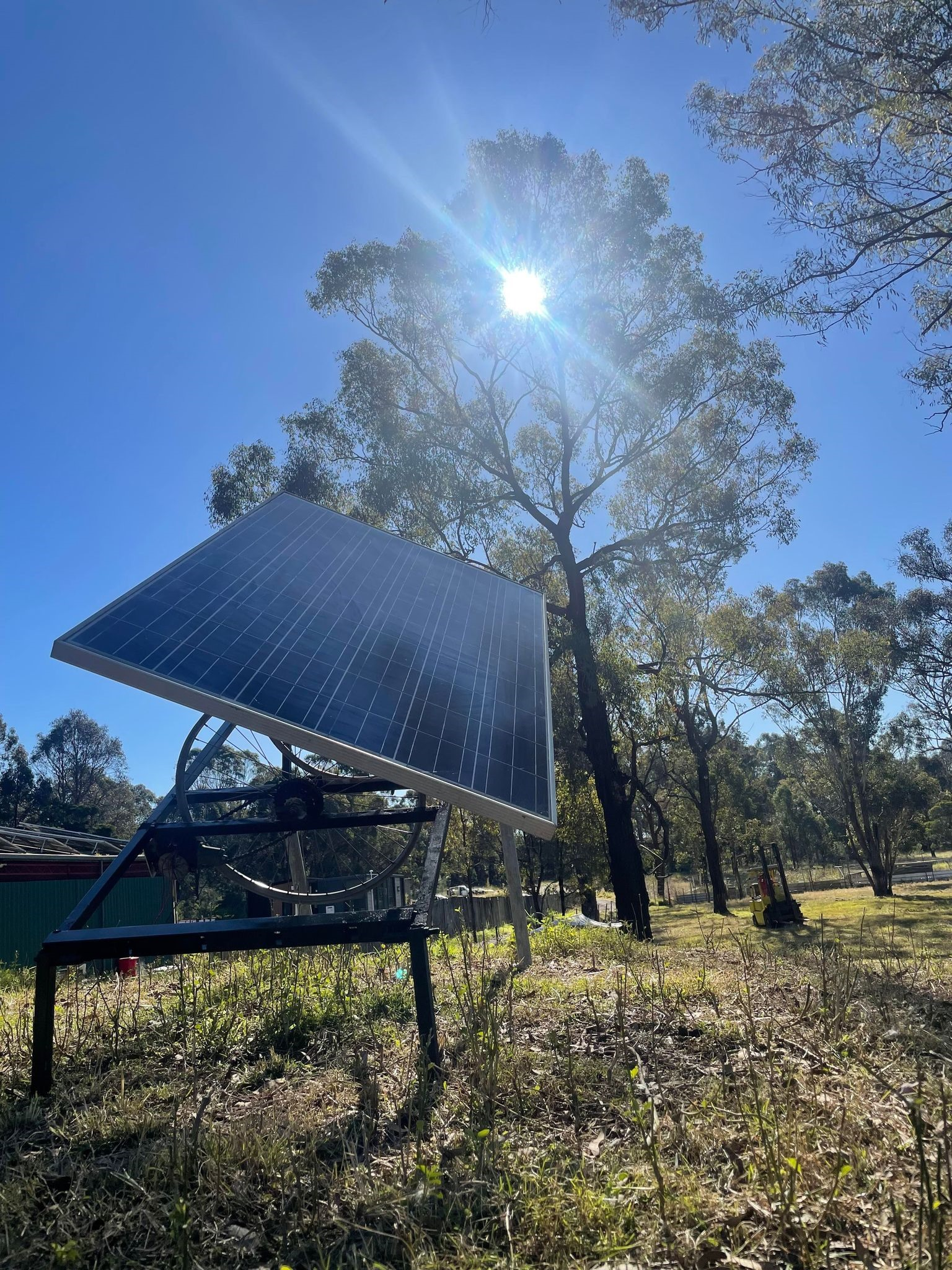
Kasper Daignault
Kasper studied Mechatronics Engineering at Western Sydney University with a minor in Biomedical Engineering, graduating in 2022 with Honours. He has extensive experience in designing and manufacturing electro-mechanical systems, particularly for the development of 3D cell printing devices.
Recycled Solar Trackers for the Electrification of Rural Australian Communities
Tracking a star to power a planet sounds like an impossibly complex task, however, innovations in modern technology allow for this phenomenon with materials deemed bound for the landfill. This project was aimed at utilising Australia's budding circular economy and open-source technology to design and implement a small-scale solar tracking photovoltaic system from recycled materials. Reliable and affordable access to power for rural Australian communities represents a common need for all Australians. These benefits include reliable access to education, medicine, employment, mental health services, and global connectivity through a stable internet connection. Furthermore, In Australia, we have one of the highest irradiation levels of any nation, consequently having a great potential to generate clean, reliable, and sustainable energy for rural areas in particular. With simple Ardiuno-based tracking technology, up to 50% efficiency can be gained, which results in smaller/fewer solar panels, less weather dependability, and consequently more cost-effective solutions. Despite the increased efficiency of solar tracking, large-scale applications of this technology, particularly for small rural communities, are not currently financially viable. Hence by sourcing materials from local metal recyclers and utilising low-budget electronics components, the potential for a widespread and far-reaching impact is maximised.

